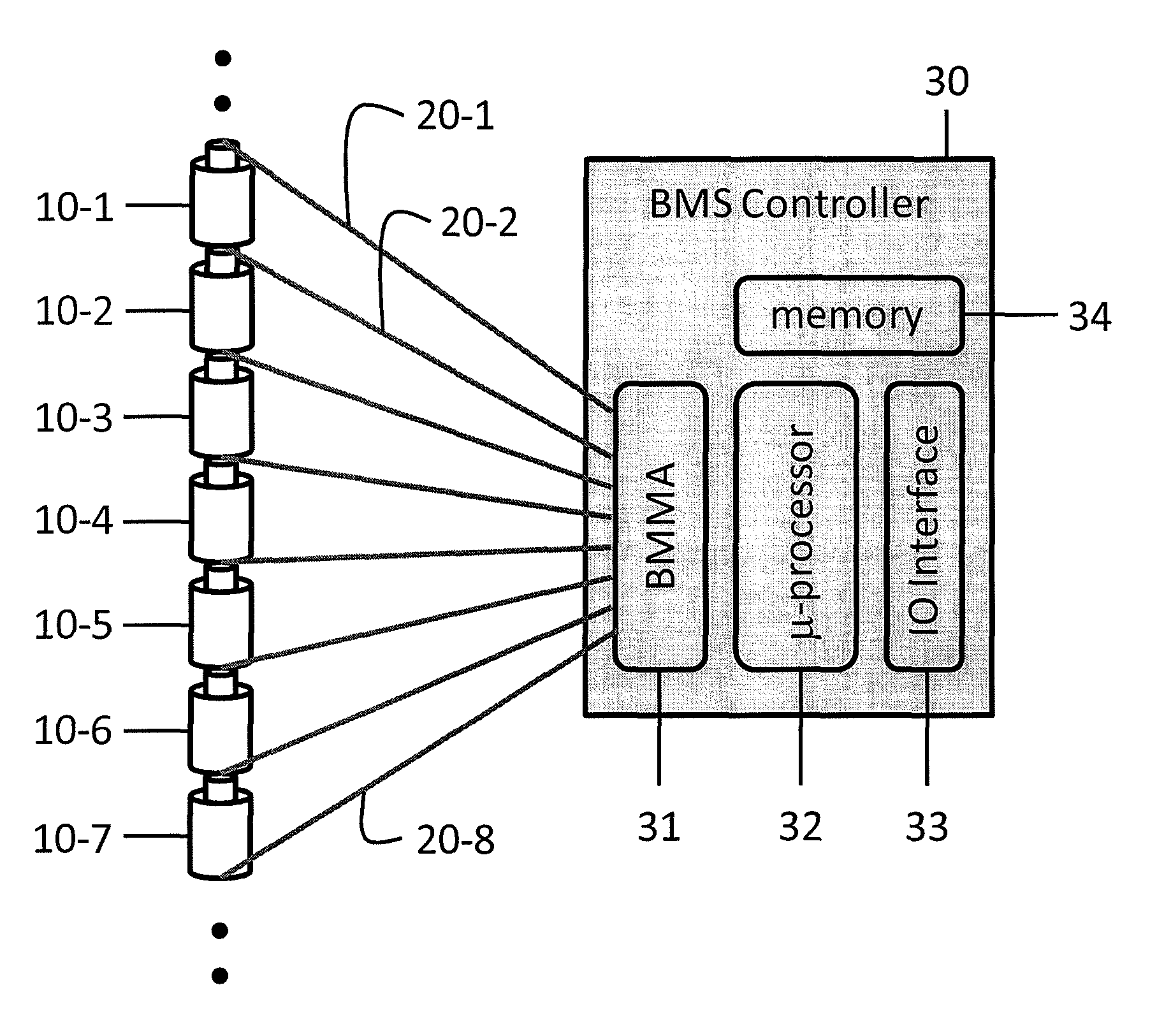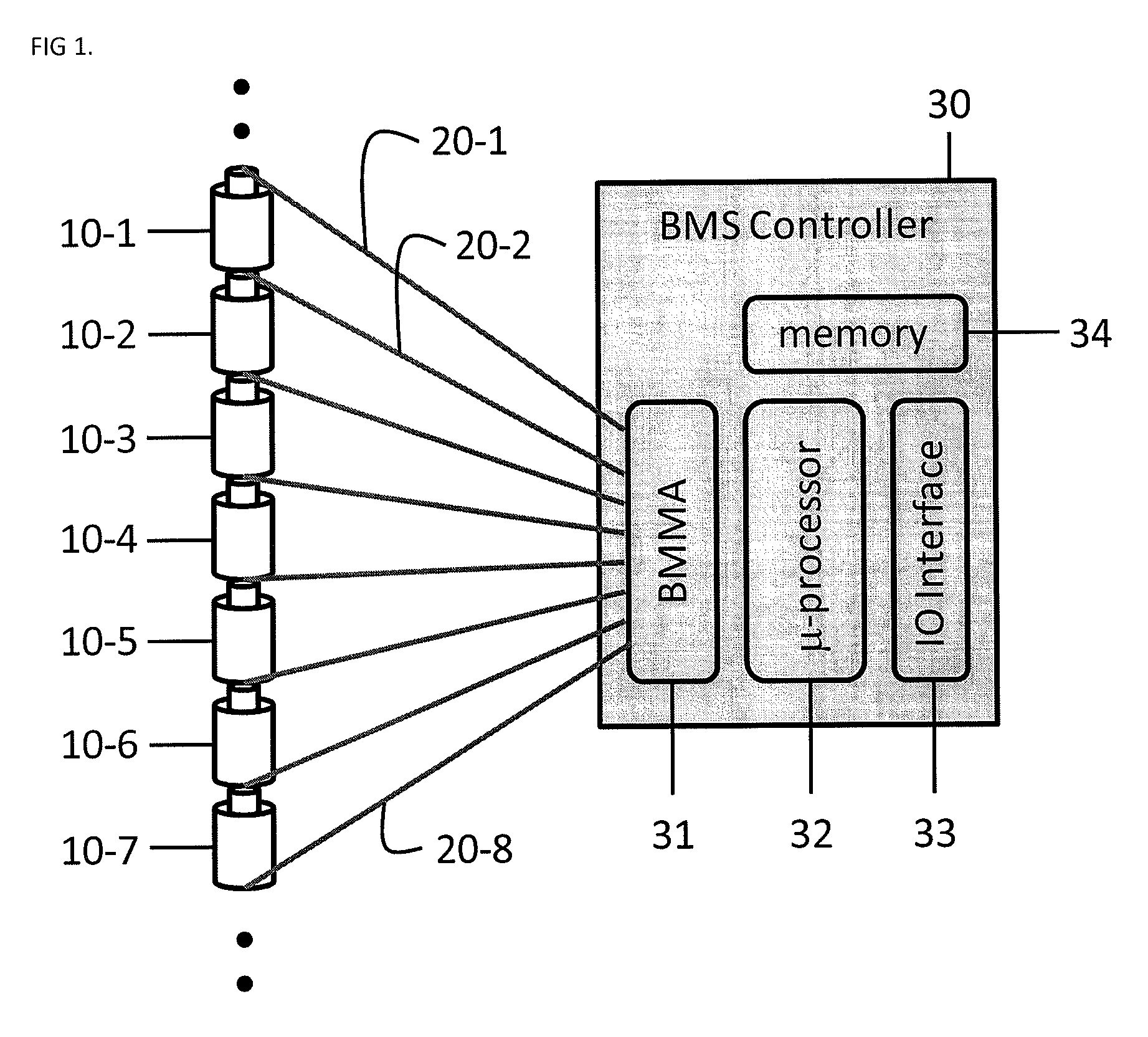Wireless battery area network for a smart battery management system
a battery management system and wireless technology, applied in secondary cells, battery service/maintenance, instruments, etc., can solve the problems of high cost and high power consumption, inability to scale up the current bms architecture to handle such a large number of battery cells, and inability to accurately configure the battery operation directly. , to achieve the effect of extending the life cycle of the battery pack, facilitating the scalability of large-scaled battery applications, and accurately extending the battery life cycl
- Summary
- Abstract
- Description
- Claims
- Application Information
AI Technical Summary
Benefits of technology
Problems solved by technology
Method used
Image
Examples
Embodiment Construction
[0023]During the course of this description, like numbers will be used to identify like elements according to the different figures which illustrate the invention.
[0024]In general, all Battery Management Systems (BMS) are implemented using an electronic circuit board. The BMS monitors the voltage, the current, impedance, and the temperature of each cell. Since a BMS has to monitor each and every Li-Ion battery cell, the typical prior art BMS board needs to be wired to every Li-Ion cell. This can be a problem if the number of Li-Ion battery cells to be monitored needs to increase. According to the prior art, hierarchical BMS architectures are often used, however, the use of BMS architectures also calls for an increase in the number of BMS boards and the overall cost. When the number of Li-Ion cells increases to a few hundred, or up to thousands, which is often the case for electric vehicle (EV) or power plant applications, the wire harness becomes a serious problem. Thus, one of the ...
PUM
| Property | Measurement | Unit |
|---|---|---|
| state-of-charge | aaaaa | aaaaa |
| charge | aaaaa | aaaaa |
| over voltage | aaaaa | aaaaa |
Abstract
Description
Claims
Application Information
 Login to View More
Login to View More - R&D
- Intellectual Property
- Life Sciences
- Materials
- Tech Scout
- Unparalleled Data Quality
- Higher Quality Content
- 60% Fewer Hallucinations
Browse by: Latest US Patents, China's latest patents, Technical Efficacy Thesaurus, Application Domain, Technology Topic, Popular Technical Reports.
© 2025 PatSnap. All rights reserved.Legal|Privacy policy|Modern Slavery Act Transparency Statement|Sitemap|About US| Contact US: help@patsnap.com



